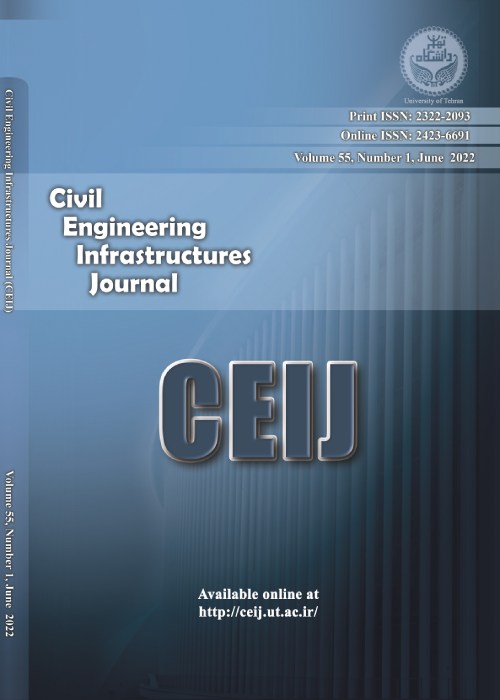Distance Insensitive Concrete Crack Detection with Controlled Blurriness Using a Convolutional Neural Network
Author(s):
Article Type:
Research/Original Article (دارای رتبه معتبر)
Abstract:
Crack detection is one of the critical tasks in health monitoring and inspection of civil engineering structures. The existence of major cracks may have detrimental effects on the integrity and performance of structures that need full consideration. Recent research into crack identification has shown an increasing interest in vision-based automated techniques, employing deep-learning computational methods such as Convolutional Neural Networks (CNNs). However, the wide range of real-world situations (e.g. camera or subject motion, misfocus, mist, and fog) can significantly compromise the accuracy of CNN-based crack identification due to a mismatched dataset in training and testing. Therefore, this study aims to establish an intelligent identification model using deep CNNs to automatically detect concrete cracks from real-world images. Moreover, the efficiency of the algorithm in identifying cracks based on blurred images in the training and validation dataset was investigated. The original dataset is replicated into various blurriness levels and split into eight different crack image sub-datasets. CNN models were trained and crack identification was carried out using different levels of image blurriness. The classification performance of the trained CNN was assessed using the concrete crack image dataset taken around Universiti Teknologi Malaysia. Sensitivity studies were also conducted to investigate the efficiency of the CNN method to identify damage under various image parameters. The results showed that the subset with the combination of sharp and slight blurriness level (blurriness Level 1) reached the highest training accuracy of 98.20%, and the network trained with blurriness Level 1 alone had the best accuracy, precision, and F1 score performance over eight training subsets. Moreover, the robustness of the networks was examined and verified under four different situations, which are; lighting, crack width, colour structures, and camera shooting angle conditions. It was observed that the presence of blurred images in the training dataset can enhance the CNN crack detection performance while high shooting angle and uneven illumination has a negative effect on the accuracy of the proposed CNN.
Keywords:
Language:
English
Published:
Civil Engineering Infrastructures Journal, Volume:56 Issue: 1, Jun 2023
Pages:
117 to 136
magiran.com/p2593126
دانلود و مطالعه متن این مقاله با یکی از روشهای زیر امکان پذیر است:
اشتراک شخصی
با عضویت و پرداخت آنلاین حق اشتراک یکساله به مبلغ 1,390,000ريال میتوانید 70 عنوان مطلب دانلود کنید!
اشتراک سازمانی
به کتابخانه دانشگاه یا محل کار خود پیشنهاد کنید تا اشتراک سازمانی این پایگاه را برای دسترسی نامحدود همه کاربران به متن مطالب تهیه نمایند!
توجه!
- حق عضویت دریافتی صرف حمایت از نشریات عضو و نگهداری، تکمیل و توسعه مگیران میشود.
- پرداخت حق اشتراک و دانلود مقالات اجازه بازنشر آن در سایر رسانههای چاپی و دیجیتال را به کاربر نمیدهد.
In order to view content subscription is required
Personal subscription
Subscribe magiran.com for 70 € euros via PayPal and download 70 articles during a year.
Organization subscription
Please contact us to subscribe your university or library for unlimited access!


